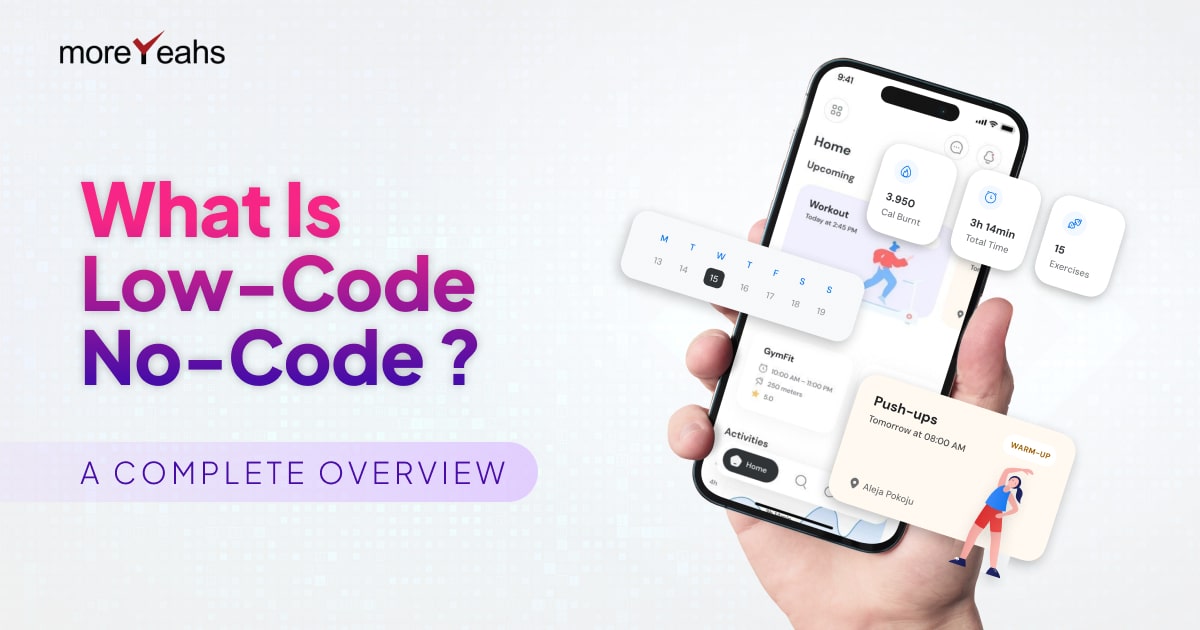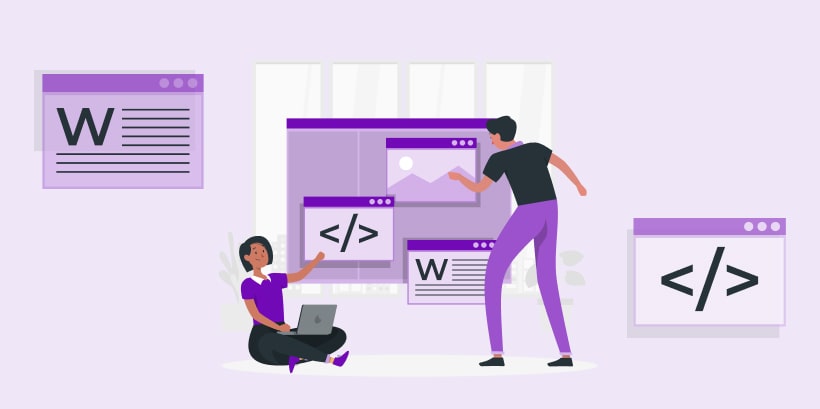What is Low Code No Code App Development Platforms?
6 MIN READThe root of the evolution of what is low code, no code development platform is intertwined with the rapid application development tools. These include Excel, Microsoft Access, and Lotus Notes. These tools empower business users with none to minimal coding skills to participate in application development process.
However, the only drawback with the above platform was that developers had to minutely comprehend the business apps and their development environments. On the contrary, this was not the case with low code no code tools. As a feather on its cap, this became the prime reason for the growing demand for low code no code.

If you are hearing about low code no code tools for the first time, this blog is for you. Keep reading for comprehensive knowledge on low-code no-code and its future.
Table of Contents
ToggleWhat is Low Code Development Platform?

To delve into how low-code and no-code platforms can revolutionize app development in the future, let’s take you through what is low code no-code.
In simple terms, low code is a highly popular strategy for rapid application development or RAD. This method leverages features such as a pull-down menu interface and drag-and-drop options to ensure automated code generation. Utilizing these features allows coders and developers to focus on building unique applications rather than the intricate details of programming.
Unlike pro-code writing, low-code reduces manual efforts that go into developing the codes to build a responsive app. Low code enhances the role of the former with an augmented and simplified experience to catalyze the application development process. Nevertheless, pro-code is still a crucial part of the app-building journey.
What is No-Code Development Platform?

This is another pivotal component developers must know to start working with low code no code app development.
If you are wondering what is low code no code platform is, consider knowing that no code is also another RAD method to develop apps like low code. However, unlike low-code, no code follows a hands-off approach and relies entirely on visual tools over manual coding and scripting.
If you are wondering what is low code no code platform is, consider knowing that no code is also another RAD method to develop apps like low code. However, unlike low-code, no code follows a hands-off approach and relies entirely on visual tools over manual coding and scripting.
In low code vs. no code, the latter is a great solution to ensure the swift development of stand-alone applications and straightforward automation. The application of no-code development platforms comes in handy for building self-service apps for business users, mobile and web apps, dashboards, and content management systems. It also plays a pivotal role in developing facility management solutions, Power BI Reporting apps, and calendar planning tools.
For further details on what is low code no code, keep scrolling.
For further details on what is low code no code, keep scrolling.
How Low Code/No Code Platforms Help in App Development?

Now that you have a brief idea of what are low code and no code, take a look at how it can help users with app development.
The points below highlight the importance of low code no code app development practices for workspace efficiency.
The points below highlight the importance of low code no code app development practices for workspace efficiency.
Enhance Collaboration

Low-code no-code tools are an essential component of DevOps today. They empower automation in the workforce to break down silos and foster smooth communication between the development and operations teams. With knowledge of what is low code and no code, the gap between these two departments can be bridged to ensure both teams work collaboratively. Such an environment promotes better communication, seamless knowledge transfer, alignment of objectives, and understanding.
Faster and More Time to Market

With low code and no code tools for app building, the development and operation team can easily code only some properties and features of the app. Additionally, they can prioritize different aspects to make it unique, reliable, secure, and user-friendly.
This also highlights low code no-code app development reduces manual work to conduct trivial or monotonous tasks. This provides developers with opportunities to focus on other functions to ensure the app runs without any major glitches. This eventually catalyzes deployment and provides faster time to market new app launches and feature updates.
Flexibility in Deployment
As discussed above, low code no code app development processes enhance workflow automation. Consequently, developers can prioritize other aspects of this app-building process. DevOps automation with what is low code no code platforms also lowers the risk of development issues related to human errors. It also tests the codes minutely at every stage and ensures bug-free end products. This catalyzes the deployment phase and ensures timely delivery and app updates.
Benefits of Low Code No Code in App Development
Now that you know what is low code no code, let’s take you through some of its crucial benefits for app-building purposes.
- User Friendly- With low code no code app development, you do not have to write codes from scratch to build apps. This helps in making the process easy and less time-consuming.

- Better Automation- This is another important benefit of what is low code no code. It is important for basic decision-making processes and helps users automate the design of workflow. This can be implemented in multiple information systems to allow users to focus on other important aspects of the app development process.
- Cost Effective- Along with reducing time to build unique apps, low code, no code tools help save on valuable resources. Furthermore, maintaining it is also easy and you can use this platform to test new ideas without worrying of hefty expenses.
- Easier Data Integration- Another benefit of what is low code no code is that it organizes workflows in such a way that collection, processing, sharing, and information storage processes are simplified. This helps in making data integration easy for any new system.
What is the Difference between Low Code and No Code

For a comprehensive understanding of what is no code, low code, you must know how they differ from one another.
The table below will take you through the differences between low code vs. no code for your easy understanding.
The table below will take you through the differences between low code vs. no code for your easy understanding.
| Low Code | No Code |
|---|---|
| This is great for semi-technical users like developers and IT professionals. | Citizen users, business developers, and other non-technical users are its target users. |
| Relatively fast as it requires a certain amount of coding to function. | This is a faster platform as you can use drag-and-drop tools to develop apps. |
| You require minimum coding skills. | Little to no programming knowledge is required to work on this. |
| Highly scalable with advanced customization features. | Users might face scalability issues for complex cases. |
| Integrates better with external API and third-party services. | Could be constrained to platform-specific information. |
| Highly flexible and allows custom integrations. | Less flexible. |
| Allows deeper customization with codes. | Offers limited customization alternatives. |
To conclude, this is everything you need to know about what is low code, no code for application development.
In a nutshell, low code works as an alloy of workspace automation and traditional coding practices. To build an application with this platform, you must have minimal coding knowledge. No code practices on the other hand are a boon for non-coders to develop interactive apps. It requires zero coding skills, as it offers a set of templates that you simply need to drag and drop to build unique apps.
To know which the best for your business is, book a free consultation with our experts today.
Frequently Asked Questions
Non-technical users like citizen developers and business analysts can use no-code platforms while IT professionals with basic coding skills can use low-code tools.
With low code no code tools, you can develop a diverse range of apps, websites, dashboards, process automation tools, and forms.
Low code and no code platforms support integrations with external databases, other third-party apps, and APIs. Nevertheless, between the two, the former is more flexible and has advanced integration capabilities.
Table of Contents
ToggleContact Us
